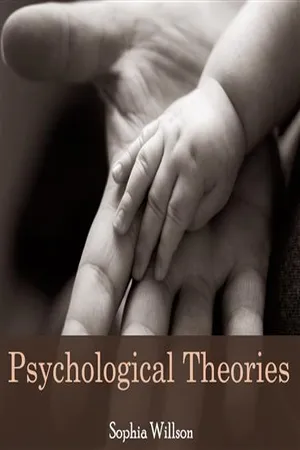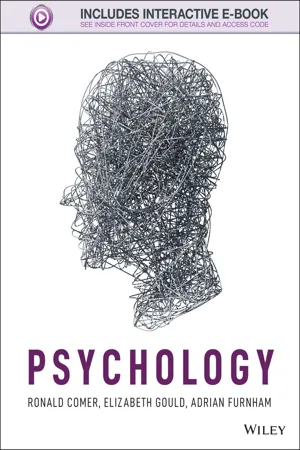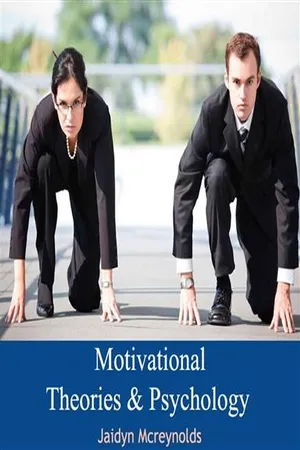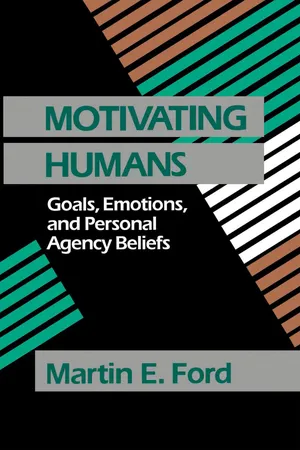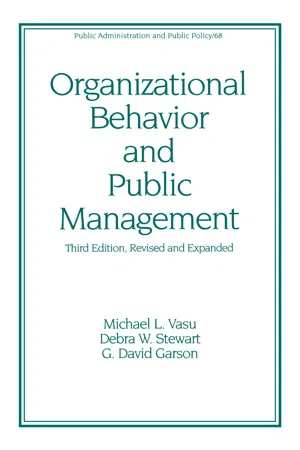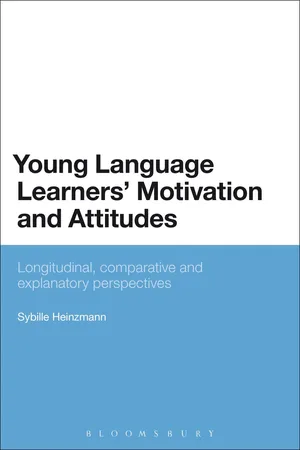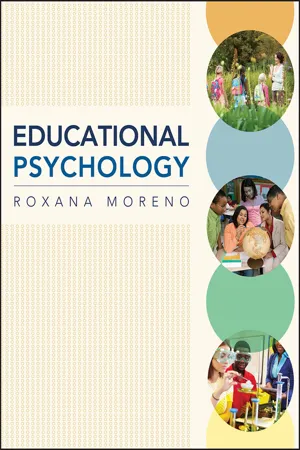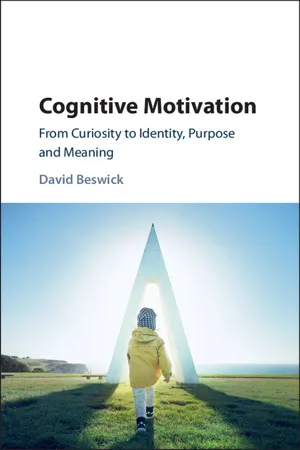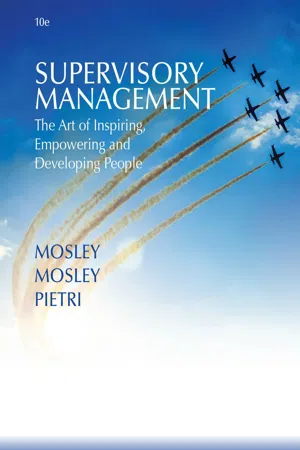Psychology
Theories of Motivation
Theories of motivation in psychology aim to explain why individuals are driven to behave in certain ways. These theories include the instinct theory, drive-reduction theory, arousal theory, and humanistic theory. Instinct theory suggests that behavior is driven by innate biological instincts, while drive-reduction theory posits that motivation arises from the need to satisfy physiological needs. Arousal theory emphasizes the pursuit of an optimal level of arousal, and humanistic theory focuses on the fulfillment of personal potential and self-actualization.
Written by Perlego with AI-assistance
Related key terms
1 of 5
11 Key excerpts on "Theories of Motivation"
- No longer available |Learn more
- (Author)
- 2014(Publication Date)
- College Publishing House(Publisher)
______________________________ WORLD TECHNOLOGIES ______________________________ Chapter 5 Motivation Theory Motivation is the driving force by which we achieve our goals. Motivation is said to be intrinsic or extrinsic. The term is generally used for humans but it can also be used to describe the causes for animal behavior as well. This refers to human motivation. According to various theories, motivation may be rooted in a basic need to minimize physical pain and maximize pleasure, or it may include specific needs such as eating and resting, or a desired object, goal, state of being, ideal, or it may be attributed to less-apparent reasons such as altruism, selfishness, morality, or avoiding mortality. Conceptually, motivation should not be confused with either volition or optimism. Motivation is related to, but distinct from, emotion. Motivation concepts Intrinsic and extrinsic motivation Intrinsic motivation refers to motivation that is driven by an interest or enjoyment in the task itself, and exists within the individual rather than relying on any external pressure. Intrinsic motivation has been studied by social and educational psychologists since the early 1970s. Research has found that it is usually associated with high educational achievement and enjoyment by students. Explanations of intrinsic motivation have been given in the context of Fritz Heider's attribution theory, Bandura's work on self-efficacy, and Deci and Ryan's cognitive evaluation theory. Students are likely to be intrinsically motivated if they: • attribute their educational results to internal factors that they can control (e.g. the amount of effort they put in), • believe they can be effective agents in reaching desired goals (i.e. the results are not determined by luck), • are interested in mastering a topic, rather than just rote-learning to achieve good grades. Extrinsic motivation comes from outside of the individual. - eBook - PDF
- Ronald Comer, Elizabeth Gould, Adrian Furnham(Authors)
- 2014(Publication Date)
- Wiley(Publisher)
Psychologists define motivation as a condition that directs behaviour usually towards a goal. An individual experi- ences a motivational state that usually gives rise to a desire, an intention or a pressure to act. For any given circumstance, your behaviour is probably the consequence of a combination of sev- eral motives , your particular and specific needs or desires. Some motivations are sometimes related to the fulfilment of basic biological needs, but more often than not they are the result of complicated factors involving past experience and lifelong learning. Moti- vation also differs from person to person. Different students are more or less motivated to study, take part in extracur- ricular activities or earn extra money. But they tend to share the same physiological motivations for food, sleep and inter- personal activities. We will see in this chapter that psychologists have devel- oped a number of theories that attempt to explain how our motivation drives and guides our behaviour. Research- ers have discovered a great deal about how the body and brain signals work to motivate us to fulfil some of our basic motivation an internal state or condition that directs behaviour. motives one’s needs or desires. biological motives. We will look at how even common bio- logical motives, such as hunger, can interact with our experi- ences and thoughts to lead to specific behaviours. We will discuss how these processes develop and what happens when things go wrong: when we become motivated to do things that are not in our best interests. Theories of Motivation LEARNING OBJECTIVE 1 Compare and contrast major Theories of Motivation. Like all of us, psychologists are interested in explaining peo- ple ’s behaviour. There are several Theories of Motivation, each of which takes a different approach to explain what compels individuals to act as they do (Table 13.1). - No longer available |Learn more
- (Author)
- 2014(Publication Date)
- The English Press(Publisher)
________________________ WORLD TECHNOLOGIES ________________________ Chapter-1 Motivation ________________________ WORLD TECHNOLOGIES ________________________ Motivation is the driving force which causes us to achieve goals. Motivation is said to be intrinsic or extrinsic. The term is generally used for humans but, theoretically, it can also be used to describe the causes for animal behavior as well. Here we, refer to human motivation. According to various theories, motivation may be rooted in the basic need to minimize physical pain and maximize pleasure, or it may include specific needs such as eating and resting, or a desired object, goal, state of being, ideal, or it may be attributed to less-apparent reasons such as altruism, selfishness, morality, or avoiding mortality. Conceptually, motivation should not be confused with either volition or optimism. Motivation is related to, but distinct from, emotion. Motivation concepts Intrinsic and extrinsic motivation Intrinsic motivation refers to motivation that is driven by an interest or enjoyment in the task itself, and exists within the individual rather than relying on any external pressure. Intrinsic motivation has been studied by social and educational psychologists since the early 1970s. Research has found that it is usually associated with high educational achievement and enjoyment by students. Explanations of intrinsic motivation have been given in the context of Fritz Heider's attribution theory, Bandura's work on self-efficacy, and Deci and Ryan's cognitive evaluation theory. Students are likely to be intrinsically motivated if they: • attribute their educational results to internal factors that they can control (e.g. the amount of effort they put in), • believe they can be effective agents in reaching desired goals (i.e. the results are not determined by luck), - eBook - ePub
Motivating Humans
Goals, Emotions, and Personal Agency Beliefs
- Martin E. Ford(Author)
- 1992(Publication Date)
- SAGE Publications, Inc(Publisher)
Table 6.1 .32 Theories and Categories of Theories of Motivation1. Psychoanalytic Theory. Freud’s theorizing about the powerful internal forces influencing human behavior set the stage for many early theories of human motivation. His emphasis on deep, pervasive drives and instincts—including not only those related to sex and aggression, but also ego- and superego-linked motives associated with competence and morality—helped stimulate early efforts to identify the content of and relationships among major directive influences. Moreover, the enduring influence of his focus on arousal reduction and pleasure seeking as fundamental motivational principles are evident in many historically prominent Theories of Motivation (e.g., drive theory [5], field theory [6], operant learning theory [11]). In addition, his emphasis on the motivational power of particular emotional states (e.g., anxiety and guilt) has provided those attempting to bring emotional processes back into the mainstream of motivational theorizing with a major source of historical strength and inspiration. Thus, although some of the details of Freud’s theorizing appear to be little more than speculative storytelling, the core concepts can be easily identified in updated form even in some contemporary theories focused on the directive and arousal components of motivational patterns.2. Instinct Theory/Hormic Psychology. McDougall’s focus on instincts and the emotion-laden objects associated with those instincts is basically congruent with the emphasis in psychoanalytic theory [1] on the unseen and often unconscious forces within the individual that determine behavior; however, McDougall posited a much longer list of instincts (13 instincts plus a number of “minor” instincts) in an effort to account more specifically for the great variety of activity evident in human behavior patterns. Unfortunately, as noted in Chapter 1 - eBook - PDF
- Johnmarshall Reeve(Author)
- 2018(Publication Date)
- Wiley(Publisher)
Motivational concepts have philosophical origins. From the ancient Greeks through the Euro- pean Renaissance, motivation was understood within the two themes of what is rational, immaterial, and active (i.e., the will) and what is impulsive, biological, and reactive (i.e., bodily desires). The philosophical study of the will turned out to be a dead end that explained very little about motivation, because it actually raised more questions than it answered. To explain motivation, the new field of psychology pursued a biological–physiological analy- sis of motivation by focusing on the mechanistic, genetically endowed concept of the instinct. The appeal of the instinct doctrine was its ability to explain unlearned behavior that had energy and pur- pose (i.e., goal-directed biological impulses) and do so by using a concept whose origins could be identified (i.e., genetic endowment). Instinct proved to be an intellectual dead end as well, at least in terms of its capacity to serve as a grand theory of motivation. Motivation’s third grand theory was drive. In drive theory, behavior was motivated to the extent that it served the needs of the organism and restored a biological homeostasis. Like will and instinct, drive appeared to be full of promise, especially because it could do what no motivation theory had ever done before—namely, predict motivation before it occurred from antecedent conditions (e.g., hours of deprivation). Consequently, the theory enjoyed wide acceptance, especially as manifest in the theories of Freud and Hull. In the end, drive theory, too, proved itself to be overly limited in scope, and with its rejection came the field’s disillusionment with grand theories in general, although several additional candidate theories emerged with some success, including incentive and arousal. - Michael L. Vasu, Debra W. Stewart, G. David Garson, Michael L. Vasu, Debra W. Stewart, G. David Garson(Authors)
- 2017(Publication Date)
- Routledge(Publisher)
This is what we are calling the cognitive approach to motivation. Some theorists shun cognitive approaches in favor of acognitive approaches to studying human behavior. Denying the importance of changes in the human organism, proponents of the acognitive approach focus on the influence of the environment to account for human behavior. Faithful to the tradition of B. F. Skinner, acognitive theorists consider the type of reinforcement for behavior as critical. Both cognitive and acognitive approaches hold important lessons for students of organizational behavior. Both traditions assume motivation is a term used to describe the forces internal to the individual that cause the person to behave in a goal directed manner. The Cognitive Approach The general assumption of the cognitive approach to motivation is that understanding of those internal motives about how and why human behavior occurs is possible. The organism is perceived to be an active link in the stimulus organism response chain. Moreover, theorists of the cognitive approach believe those forces involve thinking. Figure 3 represents a vivid, if perverse, expression of a motivated person! A person clearly expressing goal directed behavior. This picture was given to one of the authors by a senior public manager from a state prison system in the south. The procedure that generated this x-ray was a routine check of suspicious prisoners. The goal here, we can assume, is to escape from prison! The individual, I think we can agree, is very motivated (driven) to achieve that goal. What are the causes of the internal forces that act upon any individual to drive them toward specific goals? If you will, what makes them do what they do? The answer(s) to this question are rooted deep in the history of Western Civilization. The philosophy of hedonism sums up our very earliest understanding of why humans behave as they do- eBook - PDF
Young Language Learners' Motivation and Attitudes
Longitudinal, comparative and explanatory perspectives
- Sybille Heinzmann(Author)
- 2013(Publication Date)
- Bloomsbury Academic(Publisher)
This absence of interest in other research traditions can be explained by the fact that language learning was considered to be in some ways funda-mentally different from other types of academic learning, as language is not just a communication coding system but also an integral part of the individual’s identity. Therefore, language learning raises issues of identity. Learning a language not only involves cognitive factors, but also, and maybe more impor-tantly, affective factors (see Dörnyei, 1994a, p. 274; Gardner, 1985, p. 146). While motivation research within the social psychological framework has directed attention precisely at these affective factors, educational psychology has concentrated more on cognitive factors. Cognitive Theories of Motivation stress the importance of mental structures, beliefs and cognitive processing. The remainder of section 2.2 provides some insight into the most influential cognitive Theories of Motivation developed in the field of educational psychology. Figure 2.4 Extended model of language learning motivation 1 Self-Concept Motivation Language Attitudes Ethnolinguistic Vitality Theoretical Perspectives on Motivation 25 2.2.1 Self-Determination theory The general tenets of the theory The main proponents of self-determination theory, Deci and Ryan, contend that motivation derives from a sense of control, autonomy and choice (Pintrich and Schunk, 1996, p. 270; Ryan and Deci, 2000). The key terms in their theory are intrinsic and extrinsic motivation. The distinction between intrinsic and extrinsic motivation is one of the most general and well-known distinctions in motivation theories. Intrinsic motivation refers to the motivation to engage in an activity for its own sake, because you find it enjoyable. Intrinsically motivated students learn because of some inherent pleasure in the activity or in order to satisfy their natural curiosity, not because they expect some external reward from it. - eBook - PDF
- Roxana Moreno(Author)
- 2011(Publication Date)
- Wiley(Publisher)
Incorporate other motivational factors. Model enthusiasm. Show unconditional positive regard. Compare students’ achievements to their own past achievements rather than to other students’ achievements. Encourage cooperative rather than competitive activities. Avoid providing unsolicited help in front of others to reduce the likelihood of sending a “low-ability cue.” B 346 •••••••••••••••••• Chapter 9 • Theories of Motivation and Affect Classroom Tips: How to Motivate Students Using Sociocognitive Theories lists the three sociocognitive theories we just discussed with corresponding classroom implica- tions and tips. Humanistic Theories of Motivation Humanistic psychology was developed in the 1950s. Unlike the previous three theories we discussed (behaviorist, cognitive, sociocognitive), humanistic theories are based on philosophy and focus on fundamental issues of life, such as identity, death, and free- dom. Humanistic Theories of Motivation place motivation to learn within a hierarchy of human needs. For example, according to humanistic Theories of Motivation, a stu- dent is more likely to be motivated to learn if she has basic needs met (shelter, food). Maslow’s Hierarchy of Needs. Abraham Maslow (1954, 1971), one of the founders of humanistic psychology, proposed that all human beings have a hierarchy of needs, shown in Figure 9.7, ranging from the most basic to the highest-order needs. According to Maslow, humans first need to satisfy their most basic needs before attempting to satisfy more sophisticated needs. The different needs can be divided in two main categories: deficiency needs, shown in purple/green in the figure, and growth needs, shown in yellow/orange in the figure. As humans satisfy their most basic physi- ological needs (e.g., food, water, sleep, shelter), they can move to satisfy other psycho- logical needs (e.g., love and belongingness, self-esteem, knowing and understanding). - eBook - PDF
Cognitive Motivation
From Curiosity to Identity, Purpose and Meaning
- David Beswick(Author)
- 2017(Publication Date)
- Cambridge University Press(Publisher)
The history of research on intrinsic motivation can be traced from the early 20th-century foundations of experimental psychology in which theories of ‘dynamic psychology’ were proposed. Play types of instinct, ‘less concerned with the struggle for existence than with the joy of living’ (Woodworth), were postulated, and a theory of the functional autonomy of motives was developed (Allport). A new kind of stimulus seeking drive was sought (Harlow). Examples of cognitive motivation illustrate aspects of intrinsic motivation, but frequently in combination with other cognitive processes which have motivational effects. The personality dynamics that moderate intrinsic motivation include the effects of personal causation, responsibility and self-determination. Consciousness as a process of integration has a central role in these pro- cesses in which an incomplete gestalt is resolved. Deci and Ryan have offered explanations in terms of organismic integration theory, a sub- theory within self-determination theory, in which basic needs for com- petence, autonomy and relatedness facilitate integration. I argue for a different conception in which such needs are seen not to be innate, but psychogenic developments reflecting conditions in which basic pro- cesses of integration account for the effects of those supposed needs. 86 86 4 Cognitive Dissonance Cognitive dissonance theory is essentially a theory about sense making. – Aronson 1999 Introduction Leon Festinger’s theory of cognitive dissonance (Festinger 1957, 1964) was a major influence on social psychology and personality research for several decades from the middle of the 20th century. It was one of a large number of cognitive consistency theories that appeared at about the same time – a time coinciding with the cognitive revolution (Baars 1986). - eBook - PDF
Supervisory Management
The Art of Inspiring, Empowering, and Developing
- Donald Mosley, Donald Mosley, Jr., Paul Pietri, , Donald Mosley, Donald Mosley, Jr., Paul Pietri(Authors)
- 2018(Publication Date)
- Cengage Learning EMEA(Publisher)
Kurt Lewin, famous 2. Explain the relation- ship between perfor- mance and motivation. EXHIBIT 7-3 Factors Affecting an Individual’s Job Performance Job Performance Personal Motivation Personal Abilities, Skills Level of Organizational Support Copyright 2019 Cengage Learning. All Rights Reserved. May not be copied, scanned, or duplicated, in whole or in part. Due to electronic rights, some third party content may be suppressed from the eBook and/or eChapter(s). Editorial review has deemed that any suppressed content does not materially affect the overall learning experience. Cengage Learning reserves the right to remove additional content at any time if subsequent rights restrictions require it. Chapter 7: Motivation 197 for his work in the study of groups, once said there is nothing so practical as good the- ory. The remainder of this chapter focuses on the important Theories of Motivation, with emphasis on their application to effective supervision. Maslow’s Hierarchy of Needs Theory One theory particularly significant and practical was developed by psychologist Abraham H. Maslow and is known as the hierarchy of needs. Of all motivation theories, it is prob- ably the one best known by managers. The key conclusion drawn from Maslow’s theory is that people try to satisfy different needs through work. 8 Principles Underlying the Theory The two principles underlying Maslow’s hierarchy of needs theory are (1) people’s needs can be arranged in a hierarchy, or ranking of importance, and (2) once a need has been satisfied, it no longer serves as a primary motivator of behavior. To understand the signifi- cance of these principles to Maslow’s theory, let us examine the hierarchy of needs shown in Exhibit 7-4. Physiological or Biological Needs At the lowest level, but of primary importance when they are not met, are our physiological or biological needs. “Man does not live by bread alone,” says the Bible, but anything else is less important when there is no bread. - eBook - PDF
- Sanna Jarvela(Author)
- 2011(Publication Date)
- Elsevier(Publisher)
Kitayama and Uchido (2005) stated that motivation is universal in all cultures and the ways in which it is con-structed depends on cultural values and characteristics. However, while traditional theories of human motivation have postulated personal agency and self-determination as the central drive of all human actions, a growing body of culture-based research suggests that these fundamental assumptions may not be as relevant among members of more interdependent cultures. As elaborated above, it seems that motivational variations may be best explained in light of prevailing sociocultural factors and the inter-play of multiple contextual variables, rather than in terms of static, bipolar cultural dimensions that cannot account for the dynamic nature of culture and motivation, which constantly change over time and across situations. In the following section, we briefly illustrate how indigenous psychology research can make a unique con-tribution to expanding and enriching mainstream Theories of Motivation through unveiling culturally specific con-ceptions of learning, motivation, and achievement. Cultural Research from Within Two Asian scholars, Li (2002) and Ho (1998), provide examples of cultural research from an indigenous per-spective. Li’s (2002) research, situated in China and focused on indigenous, traditional conceptions of learning and achievement, proposed a new dimension of motivated learning that cross-cultural research had not captured. Her model of ‘‘heart and mind for wanting to learn’’ stresses that knowledge seeking and the cultivation of lifelong learning is of greater value for Chinese learners than achievement itself. The overall aim of Chinese lear-ners, according to her, is to achieve breadth as well as depth of knowledge and, simultaneously, to personally and morally grow through the learning process.
Index pages curate the most relevant extracts from our library of academic textbooks. They’ve been created using an in-house natural language model (NLM), each adding context and meaning to key research topics.
